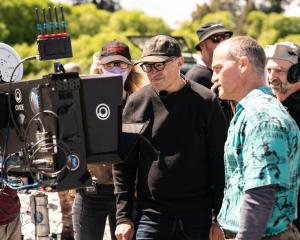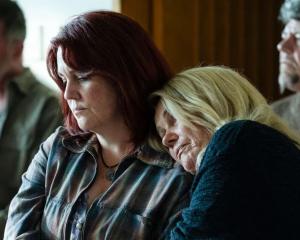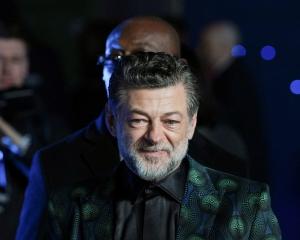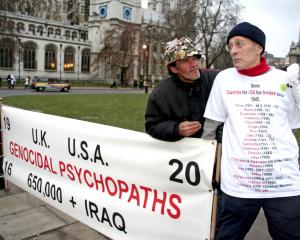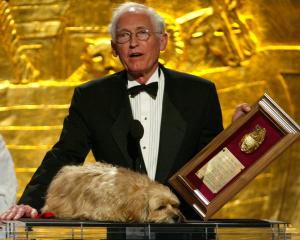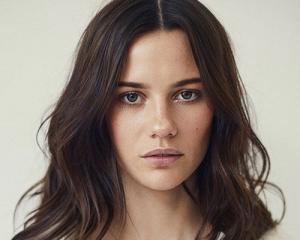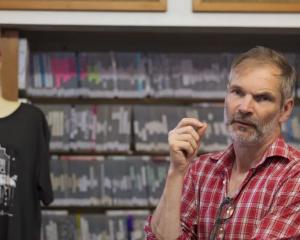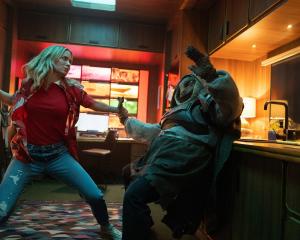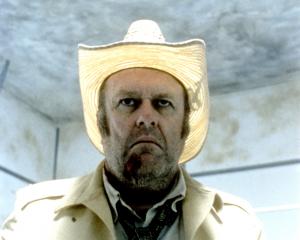The corners of Woody's mouth have smoothed. The collar on his cowboy shirt is less severe, and the stitching is now visible, as it would be on a real toy. The "leather" in his boots and holster has a more realistic tone to it.
And because nine years have passed in the Toy Story world since the last film, there are subtle but noticeable nicks and marks on Woody.
"We've made changes with the improvements in CG (computer-generated animation) over the years," says Unkrich (42), who was co-director of 1999's Toy Story 2.
"Bob Pauley, who was my production designer, worked on Toy Story 1, and he was like a kid in a candy store. He got to go back and fix the ton of various little things he had really wanted to fix years ago.
When Unkrich and his crew started work on the third instalment, they knew they were being entrusted with what is probably the most valued part of Pixar's legacy. Toy Story, the studio's first feature-length film, set a benchmark for its next 15 years of work; Toy Story 2 was the rare sequel that was even better than the original.
"Toy Story represents, for most of us who have worked here a long time, the first movie we worked on, the first movie we ever got to make," Unkrich notes.
"It's a huge part of the heritage of the studio," which includes 11 straight critically acclaimed blockbusters in 15 years, from the original Toy Story and A Bug's Life through 2008's Wall-E and last year's Up.
Other than Toy Story, the studio has avoided sequels - until now.
Next year, new chapters of Cars and Monsters Inc. are planned. Toy Story 3 actually was supposed to happen a lot sooner than now.
"We had an idea for Toy Story 3 right after Toy Story 2," Unkrich says.
"Right after 2, I was at (Pixar chief creative officer) John Lasseter's house, and he put his arm around me and said, '3? Let's do it - right now. Let's make it.' He was ready to go."
Then came what Unkrich mildly refers to as "friction" between Pixar and Disney, at the time the distributor of Pixar films. It was actually a major corporate throwdown that got so nasty Disney at one point threatened to make a Toy Story 3 without Pixar's involvement.
"It wasn't until Disney bought us, four years ago," and Pixar essentially took control of Disney's animation work, "that all those contractual issues involving Toy Story 3 went away," Unkrich continues.
But, by that time, the original sequel idea didn't seem quite as fresh as years earlier.
"We went to this two-day off-site" at a retreat called the Poet's Loft on Tomales Bay north of San Francisco, "and within 20 minutes after sitting down, we shot down that original idea," Unkrich recalls.
"But then we had nothing, and we had to think long and hard about what we wanted Toy Story 3 to be.
"And now, I think it was a good thing that all those years had gone by, because we had a different relationship with the film and the characters. We had this distance that allowed us to get to the point of having Andy" - the toys' owner - "grown up".
"I looked long and hard at third films in series to see if there were any good ones that I could learn from. And there weren't any that hadn't just gone off the train tracks by their third film. Until that is, I got to the third Lord of the Rings film.
"I thought, 'That's not fair. That's part of a longer story, the conclusion to a trilogy.'
"And I had an epiphany. 'That's how we need to think of Toy Story 3, as the concluding part of a trilogy, a piece of a larger story.' Once we settled on that, it came together."
What evolved from the original concept was a story that completes the trilogy of Andy and his toys: Woody, Buzz, Jessie, the Potato Heads, Rex, Slinky Dog and Barbie - the latter actually belongs to Andy's sister and had a cameo in Toy Story 2.
Andy is about to go off to college, and the toys have, for some time, been confined to a box in his room. Some of the main characters have disappeared; they were given away or thrown out over the years.
But now the toys are facing their greatest threat - the possibility of being confined to the attic, put on the block in a garage sale or, even worse, being tossed in the rubbish.
"If we had made Toy Story 3 back when, we would have just had another adventure for the toys," Unkrich says.
"The delay allowed us to think ... about the relationship between toys and their owners and what it would mean to be at that day when your owner is leaving you. That seemed like the right emotional place to set the story."
A lovely opening sequence, set right after the events of Toy Story 2, establishes the bond between Andy and Woody's gang, and makes clear that Andy intends to keep them - at home, if not with him at college. But then, his mother mistakenly donates them to the Sunnyside Day Care centre.
At first, it looks like heaven, with toys being played with all day and lots of new friends, including a Ken who has never had a Barbie, and Lotso, a folksy Care Bear-ish stuffed animal with a strawberry smell.
It turns out, however, that Sunnyside has a dark side - a very dark side; the screenplay, after all, is by Michael Arndt, a 2007 Oscar winner for the edgy Little Miss Sunshine. And Toy Story 3 turns into an emotionally intense and rather scary tale, which has the toys facing their endgame.
"It is shocking how much a daycare centre is like a prison," Unkrich says, laughing at the film's central conceit.
"They both have security cameras, with walled exercise yards. Prisons are permanent daycares for people permanently in time-out - convicts."
He watched "every prison-escape movie ever made, American and foreign" and made sure to work The Great Escape and Cool Hand Luke jokes into the finished film.
But in wrapping up the trilogy, he wanted "this story to not pull its punches," to stare into the oblivion that faces human and toy alike. It makes for some of the most intense and emotional moments ever to grace a Pixar film.
Toy Story 3 is visually stunning and it works beautifully, largely because its creators never really viewed it as a sequel.
"I never wanted Toy Story 3 to feel like another sequel just grafted on. We all know that if you put '3' after your title, it typically means garbage, and we knew that going in," Unkrich says.
"The only reason we made Toy Story 2 is that we happened to come up with a storyline that was really good. It wasn't driven by wanting to make a sequel. Initially, when people asked us when Toy Story 2 was going come out, we'd say, 'We have no interest in sequels. We just want to do original stories'.
"What we've learned over the years, though, is that, while we still want to tell original stories, we always want to respect the fact that people love the characters that we've created, and want to see more of them. So, as a studio, we're finding ways to do both."
Unkrich says continuing the Toy Story franchise, making a film that stands up to the two that came before, wasn't even the greatest pressure. It's that unprecedented string of Pixar successes.
"I actually had double pressure because not only was I making a Toy Story sequel, but I was making the next Pixar movie," Unkrich says.
"No director here wants to be the one who breaks the record and makes the first dud.
"I call it fear-based film-making."

